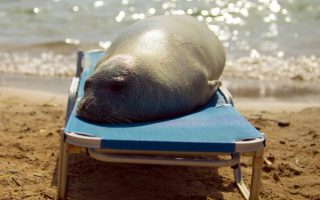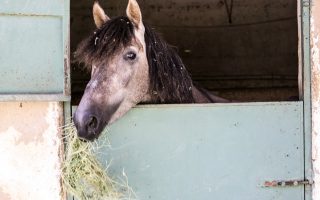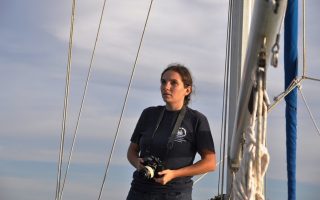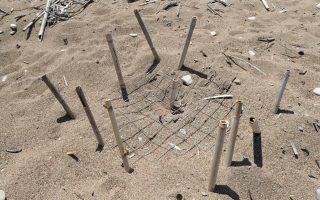The impressive comeback of a seahorse colony off Halkidiki

In November 2007, scuba diver Vassilis Mentogiannis joined a dive team from the Ephorate of Underwater Antiquities on a mission to inspect the expansion of a port at Stratoni, Halkidiki, in northern Greece.
“As we finished our underwater inspection of the port, we thought to continue exploring a bit further, over to the mouth of the Argyro stream. Suddenly, a seahorse swam past me. I was excited, because even though I have been diving for years I had never seen a seahorse. Then we saw another, and another… the place was full of them. It was really quite special,” remembers Mentogiannis.
Fascinated by the discovery, the diver returned to the location a few months later.
“Again, we came across a large number of seahorses in the area. Coming out of the sea, we asked the locals what they knew,” says Mentogiannis. “At Stratoni, fishermen confirmed that this population of seahorses has been around for years and showed us some of the specimens they had caught in their nets.”
The discovery turned out to be very important indeed.
“What is especially interesting about Stratoni is the habitat, the natural environment where the seahorses live and reproduce,” explains Costas Dounas, director of research at the Hellenic Center for Marine Research's (HCMR) Institute of Marine Biology, Biotechnology and Aquaculture.
“The seahorse is a vulnerable species: It moves slowly, it can easily become tangled in nets and as a result, we are seeing fewer and fewer of them in the Greek seas,” says the scientist. “So we are impressed by the steady presence of a population of seahorses in Stratoni, and especially as the seabed here is quite barren. It is definitely worth further exploration so that we can find the answer to one of the main questions: How does such a sensitive species maintain a steady population in this particular area?”
A major storm in 2010 flooded the stream and dumped thousands of cubic meters of sediment onto the seabed off Stratoni, burying the seahorses' ecosystem in a blanket of mud.
“Unfortunately, the population declined quite significantly after that event,” says Mentogiannis. “So we decided to place wire mesh over the seabed and attached ropes and a few fake aquarium plants to it in order to simulate a natural underwater garden. The initial results were immediate and impressive as many seahorses have already settled in this experimental habitat.”
The HCMR is monitoring the seahorses closely and an effort is under way to photograph each individual separately using special software that helps tell them apart, as any form of tagging is practically impossible given their small size and sensitivity. Scientists are also regularly testing the water and the sediment, as well as monitoring the population size. One of the theories that the HCMR is investigating is whether these particular seahorses may belong to a different species than the two that are known to be native to Greece, the long-snouted and short-snouted varieties.
At the same time, a team of divers, including Mentogiannis, are shooting a scientific documentary on the abovementioned two species of seahorse found in the Greek seas, which will be supervised and researched by the HCMR. The documentary is a co-production of the Underwater Filming & Research (UFR) Team, OTE TV and the HCMR, under the auspices of the Regional Authority of Central Macedonia and the Tourism Ministry.
“The seahorse exudes a sense of charm and romanticism,” says Mentogiannis. “For example, when we spoke to the fishermen about the possibility of protecting the Argyro stream mouth, they were all supportive of the idea. I would be very happy if a seahorse park were created at Stratoni, something that would safeguard their continued presence. The seahorse is a very sensitive little creature. My friends keep teasing me, telling me I've fallen in love. They're not wrong: When you spend so many hours over so many years observing them, it's something that just happens.”





